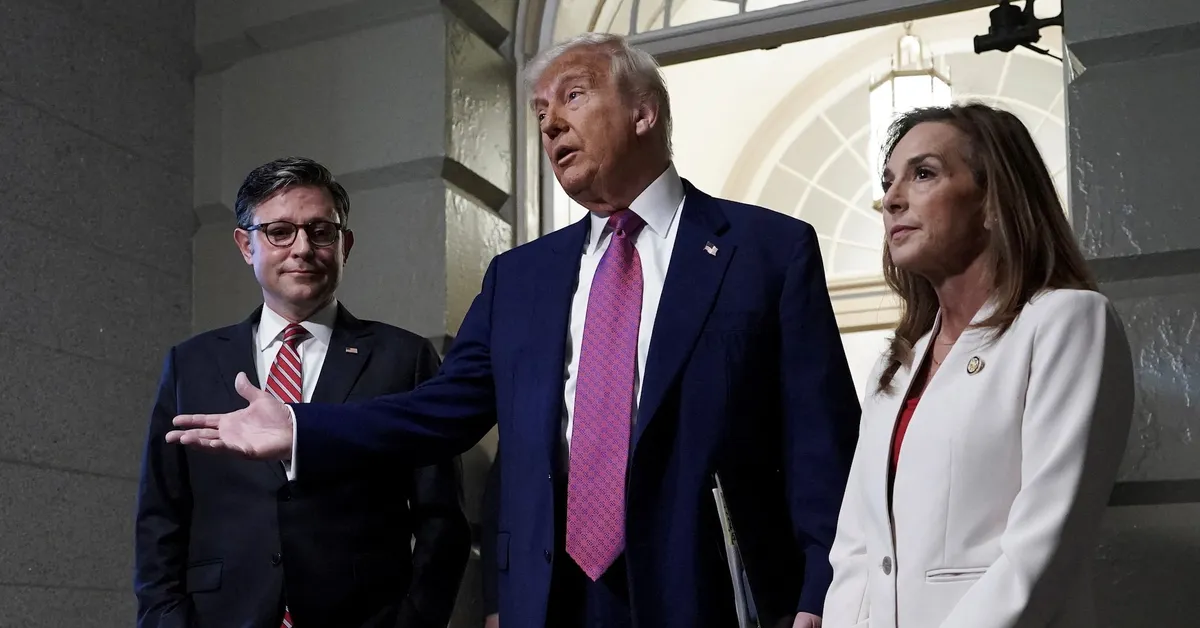
On May 20, in a pivotal moment for his administration, President Donald Trump traveled to Capitol Hill to rally Republican lawmakers around a substantial tax-cut bill that is integral to his domestic agenda. This legislation aims to build on the successes of his first term, particularly focusing on extending the 2017 tax cuts, which were a hallmark of his economic policy. However, various factions within the Republican majority have voiced their concerns, potentially threatening the bill's passage in the House of Representatives.
Upon arrival at the Capitol, Trump acknowledged the dissatisfaction among some Republicans but remained optimistic, predicting that the tax-cut bill would ultimately become law. "It's not a question of holdouts. We have a tremendously unified party," he remarked to reporters, emphasizing the need for solidarity among Republican lawmakers. Trump also warned that those who oppose the bill could face primary challenges in the upcoming congressional elections, adding pressure for party unity.
The proposed legislation not only seeks to extend the 2017 tax cuts but also introduces new tax breaks on income derived from tips and overtime pay, aligning with Trump's populist campaign promises. However, nonpartisan analysts have raised concerns about the financial implications, estimating that the bill could increase the federal government’s debt by an alarming $3 trillion to $5 trillion, on top of the existing $36.2 trillion debt.
Trump's visit aims to consolidate a divided House majority, which currently stands at 220-213. Hardliners are pushing for substantial spending cuts, while moderates are anxious about protecting Medicaid. Additionally, Republican lawmakers from coastal regions are focused on safeguarding their constituents' ability to deduct state and local taxes. House Speaker Mike Johnson expressed confidence in Trump’s ability to encourage party members to align and secure the necessary votes.
Republicans are also exploring parliamentary tactics to circumvent the objections raised by Democrats, who argue that the tax-cut bill disproportionately favors the wealthy and threatens essential social programs. Hardline Republican Representative Ralph Norman of South Carolina, who previously opposed the bill, mentioned, "I think he'll urge people to get together and I think it'll be an upbeat speech… I'm glad he's coming." Johnson aims for a vote by Thursday to allow the Senate to deliberate on the bill next month.
The backdrop to this legislative push is a recent decision by credit-rating agency Moody's, which downgraded the U.S. federal government’s credit rating, citing ongoing concerns about the national debt. Despite this, the Republican-controlled Congress has yet to reject any of Trump’s legislative requests. If the House successfully passes the tax-cut bill, the Senate will face the challenge of reconciling its version, which may differ significantly from that of the House.
As the situation unfolds, Senate Majority Leader John Thune of South Dakota acknowledged that while the process is complex, it is expected to move forward in a timely manner. With Republicans holding a slim 53-47 majority in the Senate, any dissent, particularly from conservative members like Senator Josh Hawley of Missouri, could complicate the passage of the bill.
As President Trump continues to push for the tax-cut bill, the coming days will be crucial in determining its fate and the future direction of the Republican Party's legislative agenda.